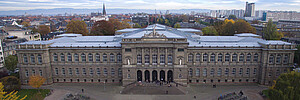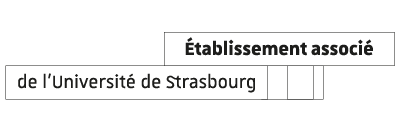Publication date: 17/07/17
ThemesNews Headline news
Since 9 July 2017, the Neustadt quarter has been declared World Heritage by the United Nations Educational, Scientific and Cultural Organisation (Unesco). The right timing for Cathy Blanc-Reibel, doctoral student in urban sociology * since 2012, to reveal the main results of the survey she has been carrying out for two years to understand how the inhabitants of this quarter manage to reconcile the heritage dimension of their life with their daily lives.
Almost 400 people responded to the questionnaire developed by Cathy Blanc-Reibel, Sandrine Glatron, researcher in geography, and Sandrine Bubendorff in the framework of the survey initiated by the city of Strasbourg in 2016. First important result: the two main criteria retained by the inhabitants justifying labelling in their eyes, are first the monumental architecture and then the local memory. 'Local history counts immensely for the inhabitants although the Unesco classification gives an International dimension and visibility', underlines the doctoral student. Another observation is that not all Strasbourgers have an idyllic view of the impact of this ranking on their daily lives. If 25% perceive it positively, by contrast 29% see it negatively and 30% weigh the pros and cons, especially in relation to renovation constraints, tourism, etc. 'In reality, it is not the Unesco classification as such that introduces constraints but already before there were town planning constraints and the classification to historical monuments for example'.
All of Cathy Blanc-Reibel's work shows that the Neustadt is an architectural heritage to which the people of Strasbourg are very attached, in spite of the prevailing ideas, and which has survived in time without any great modifications or destruction. The Neustadt quarter has always been rental property and its function has not changed over time. Its great modernity allowed it to withstand the waves of destruction and transformation by real estate developers in the 1970s. 'As early as the 1970s, barely 30 years after the Second World War, it was inscribed in the list of historic monuments; and today, in just a century, in UNESCO heritage. It is fascinating!' Cathy White-Reibel is eager to study how labelling will really change urban practices and the impact on the real estate market.
Anne-Isabelle Bischoff
* Cathy Blanc-Reibel is attached to the Architecture, morphology / urban morphogenesis, project (Amup - Ensas) laboratory and UMR 7367 European Dynamics (DynamE). Her thesis, entitled 'The stakes of heritage: the case of the Neustadt in Strasbourg. Towards a museum transformation of urban settlements?' is tutored by Florence Rudolf and Sandrine Glatron.
















